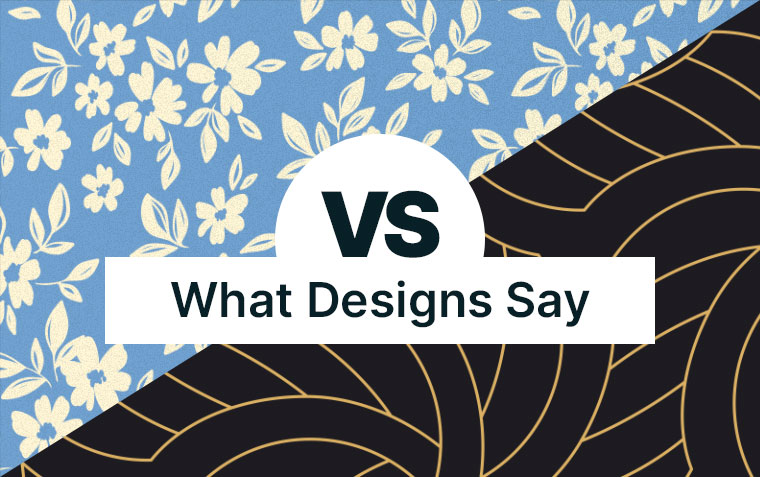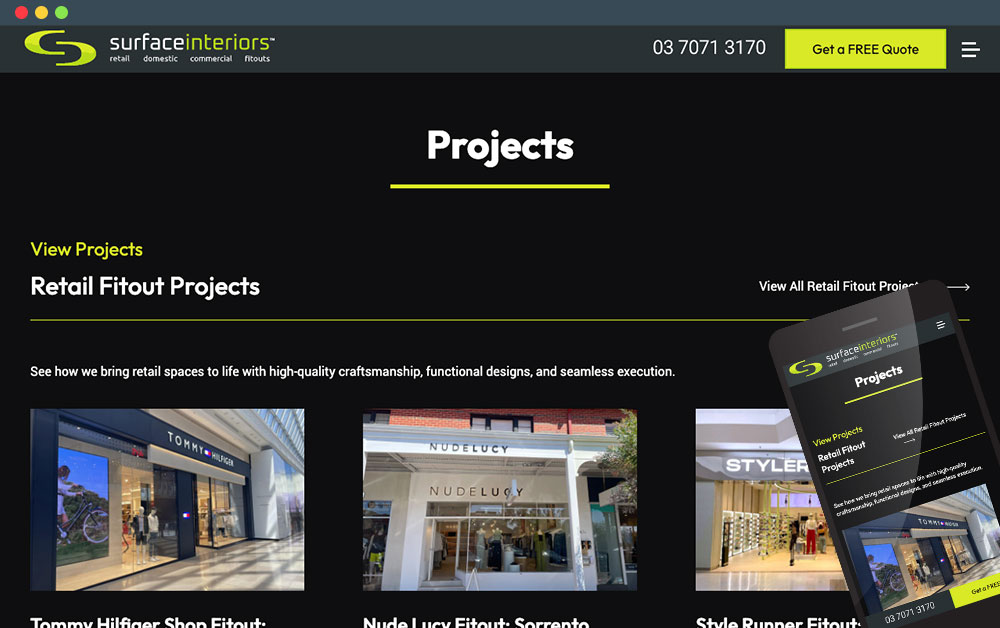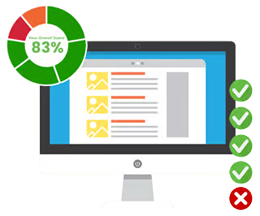What Different Design Styles Tell Users

There are many connotations baked into different design styles that are informed by our experiences and our culture. As soon as a user lands on your website, they’re taking in all the visual elements and forming ideas about your business based on what your chosen design style is telling them. It’s important to know what is being communicated to your users and making sure it aligns with your brand’s personality and purpose.
The Psychology of Design
The old saying “a picture is worth a thousand words” speaks to how people pick up lots of information based on the visual elements around us. We can pick up on complex ideas within a picture before needing to read a single word and first impressions are formed within seconds.
In custom website design, the first main communicators that set the tone for your users are:
- Typography
- Colour
- Layout
- and Imagery
It’s also important to note that the culture of your users affects how they interpret different design choices. This is because design languages are built up over long periods of time and work with cultural associations that strengthen with each use.
A good example of this is in colour usage – green used in western countries has the association of natural, healthy, and environmental, but some Asian and South American countries have negative connotations such as infidelity and death with the colour green.
Common Web Design Styles and What They Communicate
Minimalist Design
It is characterised by:
- Clean layouts
- Strong use of white space
- and Limited colour palettes
It communicates:
- Simplicity
- Clarity
- Sophistication
- and Professionalism
It is recommended for:
- Corporate sites
- Some tech start-ups
- and Luxury Brands
Bold & Colourful Design
It is characterised by:
- Bright colours
- Large typography
- and playful visuals through images and shapes
It communicates:
- Energy
- Creativity
- and Confidence
It is recommended for:
- Creative agencies
- Brands aimed at a youthful audience
- and Lifestyle products
Retro or Vintage Design
It is characterised by:
- References to past time periods
- Fonts that were popular in the past
- Courier: imitates a typewriter
- Cooper black: a very versatile font used in the 60s and 70s
- Hand-drawn lettering
- and textures or patterns that associate age or time periods:
- Rough edges to look like a rubber stamp
- Grainy gradients and halftone dots to imitate past printing techniques
- Atomic inspired patterns of the 50s
Regardless of which time-period it utilises, retro and vintage design communicates:
- Nostagia
- Authenticity
- and Craftsmanship
It is recommended for:
- Boutique stores
- Handmade goods
- and Hospitality
Modern & Flat Design
Very similar to minimalist design, it is characterised by:
- Simple icons
- Clean lines
- and Geometric shapes
It communicates:
- Efficiency
- Innovation
- and Modernity
It is recommended for:
- Tech Companies
- Apps
- and Start-ups
Elegant & High-End Design
It is characterised by:
- Serif fonts or clean san-serif fonts
- Muted colour schemes
- and High-quality imagery
It communicates:
- Exclusivity
- Luxury
- and Trustworthiness
It is recommended for:
- High-end fashion
- Real estate
- Hotels
- and High-end lifestyle products
Playful or Whimsical Design
It is characterised by:
- Hand-drawn elements
- Irregular shapes
- and Fun animations
It communicates:
- Approachability
- Creativity
- and Friendliness
It is recommended for:
- Kids’ brands
- Creative businesses
- and Lifestyle Blogs
Matching Design Style to Brand Identity
Matching the design style to your branding can be intimidating, especially if you’re unsure about what different design elements are communicating to your clients. But think about how you would perceive a professional service, like a law firm, using comic sans. It’s a mismatch in style and purpose that colours what you think of the brand.
Tips to find the right design style:
- Look up other companies in your same industry. Note what similarities they share and what can differ. This shows what users are expecting to see.
- Consider mixing individual elements from different design styles. You might have a professional service, so want to use a primarily minimalist design, but want to highlight your friendly and approachable values by mixing in some bolder colours and play with different shapes.
- Try word association for your industry, brand values, and design styles you’re considering. This can be done by yourself or by asking others, and you can create a mind-map or list to provide something visual you can refer back to.
Tips to maintain consistency across branding and web presence:
- Make sure you have colour codes saved in Hex code, RGB, CMYK, and Pantone (if relevant)
- Check in your design and marketing tools if you can store brand colours, fonts, and logos. This allows for easier creation as you select pre-set design elements without worrying about it differing.
- Ask your web developer to add your brand colours or fonts in as variables in the css.
Adapting Design Styles for User Experience
Some design choices might need to be adjusted to make your website a better experience for users. Different device types have varying screen sizes, brightness, and colour settings, and different users have a variety of accessibility needs. Fonts used should be clearly readable, colours should have enough contrast, and your website layout should adjust to the screen size. Your website can be the most beautiful site and communicate everything correctly, but if it isn’t usable, it’s not good design.
*****
The design choices you make about your brand and custom website design are not purely aesthetic choices – they communicate information about your brand to potential users. You want to make sure that what you’re communicating through your website matches what your company does as well as what your values are. Now is a good time to look over your own branding and online presence to ensure consistency, usability, and that what you’re visually telling users about your company is correct.
If you would like some help evaluating your website’s design style, or know that your website doesn’t match up, contact us today for a review or refresh.



